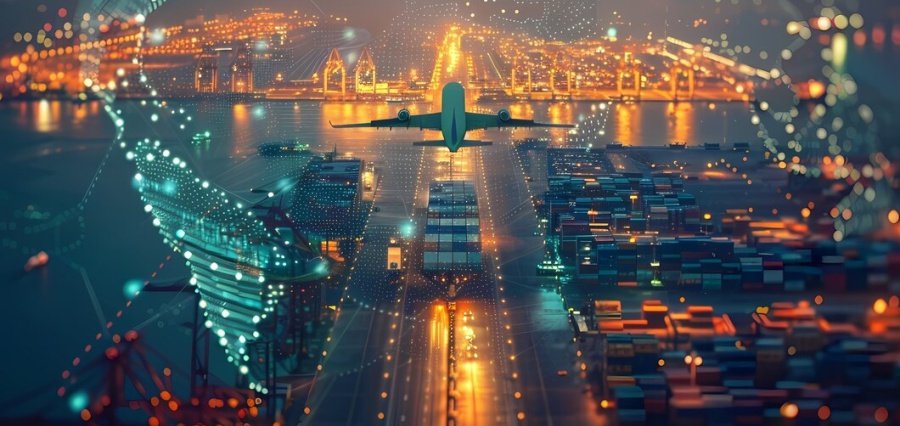Logic In Tech
The logistics industry has been undergoing a significant transformation over the past decade, with the advent of new technologies and the emergence of innovative business models. These developments have made logistics faster, more efficient, and more cost-effective than ever before.
In this article, we’ll take a look at the top ten logistics innovations that are revamping the industry.
Internet of Things (IoT)
The Internet of Things (IoT) is transforming logistics by enabling real-time monitoring of shipments, inventory, and vehicles. IoT sensors can track the temperature, humidity, and other environmental factors that affect the quality and safety of goods in transit. This data can be used to optimize supply chain processes and prevent damage to products.
Autonomous Vehicles
Autonomous vehicles, including drones and self-driving trucks, are revolutionizing logistics by reducing delivery times, increasing efficiency, and improving safety. These vehicles can operate 24/7 and can deliver goods to remote areas that are difficult to access by traditional transportation methods.
Artificial Intelligence (AI)
Artificial Inefficiency and is being used in logistics to optimize route planning, improve supply chain efficiency, and predict demand. AI algorithms can analyse large volumes of data and provide real-time insights that can help logistics companies make better decisions.
Blockchain
Blockchain technology is being used in logistics to improve transparency, reduce fraud, and increase security. Blockchain can track the movement of goods from the point of origin to the final destination, providing an immutable record of every transaction along the way. Big data analytics is being used in logistics to analyse large volumes of data from multiple sources, including IoT sensors, supply chain partners, and social media. This data can be used to optimize logistics processes, improve customer service, and identify new business opportunities.
Robotics
Robotics technology is being used in logistics to automate tasks such as picking and packing, inventory management, and transportation. Robotic systems can operate 24/7 and can perform tasks with greater accuracy and speed than human workers.
Cloud Computing
Cloud computing is being used in logistics to enable real-time collaboration and data sharing between supply chain partners. Cloud-based logistics platforms can provide a centralized system for managing inventory, orders, and shipments.
3D Printing
3D printing technology is being used in logistics to produce spare parts, prototypes, and customized products on demand. This can reduce lead times, lower inventory costs, and improve customer satisfaction.
Predictive Analytics
Predictive analytics is being used in logistics to forecast demand, optimize inventory levels, and improve delivery times. Predictive models can analyse historical data and identify patterns that can help logistics companies make more accurate forecasts.
Augmented Reality (AR)
Augmented Reality (AR) technology is being used in logistics to improve warehouse efficiency and accuracy. AR systems can provide workers with real-time information about the location and quantity of products, reducing errors and improving productivity.
Digital twins are virtual replicas of physical assets, such as warehouses, transportation systems, and equipment. Digital twins can be used to simulate logistics operations and test new processes and technologies before they are implemented in the real world. This can reduce costs and improve efficiency.
Augmented Reality (AR) technology is being used in logistics to train workers on new processes and equipment. AR can provide workers with a virtual environment where they can learn by doing, improving their skills and reducing the risk of accidents and errors.
Mobile Technologies
Mobile technologies such as smartphones and tablets are being used in logistics to enable real-time communication and collaboration between supply chain partners. Mobile apps can provide drivers and warehouse workers with real-time information about shipments and inventory, improving efficiency and reducing errors. Last mile delivery solutions are technologies and systems designed to optimize the delivery of packages to their final destination. This can include crowdsourcing, on-demand delivery, and autonomous delivery robots. Last-mile delivery solutions can improve delivery times, reduce costs, and increase customer satisfaction.
Micro-fulfilment centres are small, automated warehouses located close to urban areas. These centres can be used to fulfil online orders quickly and efficiently, reducing delivery times and costs. Micro-fulfilment centres can also help retailers to manage inventory more effectively and reduce the need for large, centralized warehouses.
These are just a few of the many logistics innovations that are changing the industry. As logistics companies continue to embrace new technologies and business models, we can expect to see even more exciting developments in the years to come. These technologies are enabling logistics companies to operate more efficiently, reduce costs, and provide better service to customers. As the logistics industry continues to evolve, we can expect to see even more innovative technologies emerge that will further revolutionize the way goods are transported and delivered.







